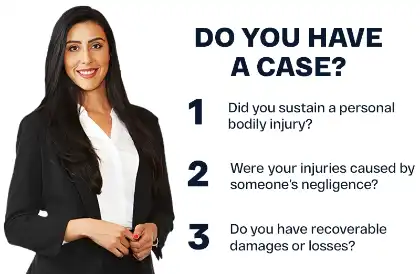Two drivers were killed in a head-on collision involving three vehicles on Highway 145 near Avenue 11 in Madera County early Saturday morning, July 12, 2025.
According to authorities, the crash occurred around 3:17 a.m. and involved a red Jeep Cherokee, a white Subaru Crosstrek, and a white Isuzu NPR.
A 49-year-old Fresno woman driving the Jeep was headed southbound when she crossed into the northbound lane and collided head-on with a Subaru driven by a 25-year-old man from North Fork. Both vehicles sustained major damage and came to rest in the roadway.
Shortly after the initial crash, a 41-year-old man from Kerman driving a northbound Isuzu NPR failed to see the wreckage and crashed into the two vehicles. The Isuzu sustained minor damage, and its driver was not injured.
Despite life-saving efforts, both the Jeep and Subaru drivers were pronounced dead at the scene. Authorities noted that the woman was not wearing a seatbelt at the time of the crash.
It is currently unknown if alcohol played a role in the incident. The investigation remains ongoing.
Contact Our Car Accident Lawyers In Madera County, CA
Head-on collisions often lead to devastating outcomes, including serious injuries and loss of life. When multiple vehicles are involved and two drivers are killed, the aftermath can place a heavy emotional and financial burden on surviving families.
Our car accident lawyers in Madera County can help family members understand their legal options. We can assist with reviewing official reports, preserving evidence, and determining whether compensation may be available for funeral costs, medical bills, or other related losses.
To speak with an attorney, call (888) 488-1391 or complete our “Do I Have a Case?” form to schedule a free and confidential consultation.
Steps To Take After A Fatal Car Accident
After a fatal car accident, families may be faced with a range of difficult responsibilities. While the emotional impact can be overwhelming, taking certain steps may help preserve important information and provide a clearer path forward.
- Request The Police Report
The agency that responded to the crash, such as the California Highway Patrol, will usually prepare a detailed report. This document may contain valuable facts about the vehicles, road conditions, and initial findings. You can contact the agency directly to ask how to request a copy. - Contact The Medical Examiner’s Office
The county coroner or medical examiner may provide a report outlining the official cause of death. This record is often used for legal matters, insurance claims, and other important documentation. - Save Any Related Information
If you have access to photographs, video, news coverage, or witness contact information, keeping these materials organized may be helpful later. Any personal items collected from the scene should also be preserved. - Keep Track Of Expenses
Families often face unexpected costs after a fatal crash, including funeral services, travel, and out-of-pocket medical expenses. Gathering and saving receipts may help provide a clearer picture of the financial impact. - Use Caution With Insurance Communication
Insurance companies may reach out to offer settlements or request information. You are not required to make decisions immediately. Speaking with a lawyer first may help you better understand how to respond. - Speak With A Car Accident Lawyer
Legal guidance can help clarify what options may be available. A lawyer can assist with reviewing reports, preserving evidence, and determining whether compensation may be available for funeral costs, lost income, or other related losses.
Car Accident Statistics
The National Highway Traffic Safety Administration (NHTSA) reported a decrease in traffic fatalities for the fifth consecutive quarter during the first half of 2023. An estimated 19,515 individuals lost their lives in motor vehicle crashes, representing a 3.3% reduction from the 20,190 fatalities recorded in the same period of 2022. This decline was observed in both the first and second quarters of 2023.
Preliminary data also indicates a 2.3% increase in vehicle miles traveled (VMT), with an additional 35.1 billion miles driven compared to the previous year. Despite this increase in driving, traffic fatalities declined, resulting in a lower fatality rate of 1.24 deaths per 100 million VMT, down from the projected rate of 1.31 deaths.






![[12-15-2025] Sacramento County, CA – One Killed, Another Injured After Collision With Semi-Truck Near Highway 12 and Highway 160 in Isleton](https://arashlaw.com/wp-content/uploads/2025/12/12-15-2025-Sacramento-County-CA-–-One-Killed-Another-Injured-After-Collision-With-Semi-Truck-Near-Highway-12-and-Highway-160-in-Isleton-420x249.webp)
![[12-13-2025] San Bernardino County, CA – At Least One Injured After Fiery Semi-Truck Crash on 15 Freeway in Devore](https://arashlaw.com/wp-content/uploads/2025/12/12-13-2025-San-Bernardino-County-CA-–-At-Least-One-Injured-After-Fiery-Semi-Truck-Crash-on-15-Freeway-in-Devore-420x249.webp)
![[12-14-2025] Sacramento County, CA – One Killed, Two Injured After Multi-Vehicle Crash on Mack Road](https://arashlaw.com/wp-content/uploads/2025/12/12-14-2025-Sacramento-County-CA-–-One-Killed-Two-Injured-After-Multi-Vehicle-Crash-on-Mack-Road-420x249.webp)
![[12-14-2025] Solano County, CA – Pedestrian Killed in DUI Crash on Sonoma Boulevard in Vallejo](https://arashlaw.com/wp-content/uploads/2025/12/12-14-2025-Solano-County-CA-–-Pedestrian-Killed-in-DUI-Crash-on-Sonoma-Boulevard-in-Vallejo-420x249.webp)
![[12-13-2025] San Diego County, CA – Pedestrian Killed in DUI Crash on West San Marcos Boulevard](https://arashlaw.com/wp-content/uploads/2025/12/12-13-2025-San-Diego-County-CA-–-Pedestrian-Killed-in-DUI-Crash-on-West-San-Marcos-Boulevard-420x249.webp)
![[12-10-2025] Riverside County, CA – Pedestrian Suffers Head Trauma After Being Struck on Magnolia Avenue at Neece Street in Home Gardens](https://arashlaw.com/wp-content/uploads/2025/12/12-10-2025-Riverside-County-CA-–-Pedestrian-Suffers-Head-Trauma-After-Being-Struck-on-Magnolia-Avenue-at-Neece-Street-in-Home-Gardens-420x249.webp)




















